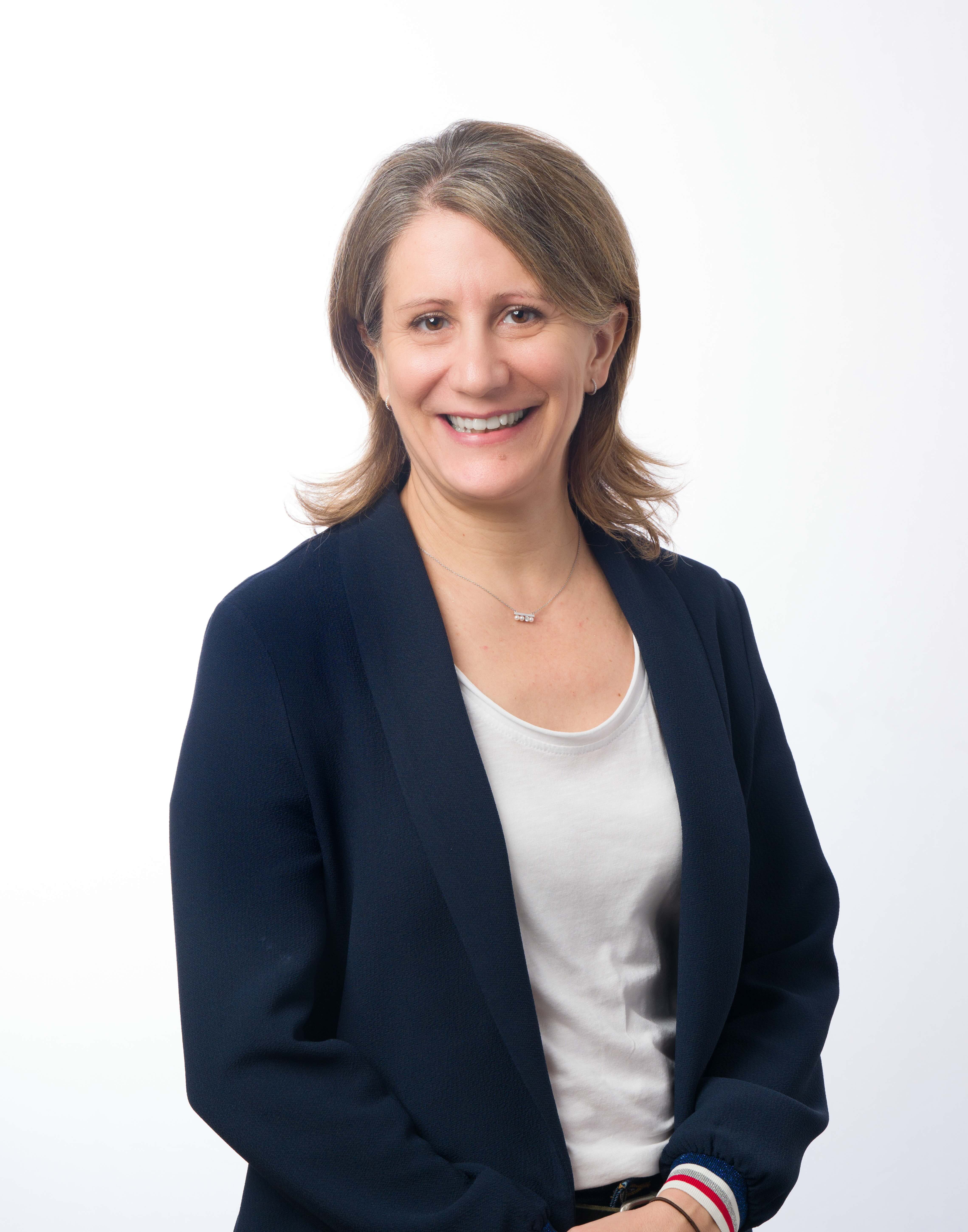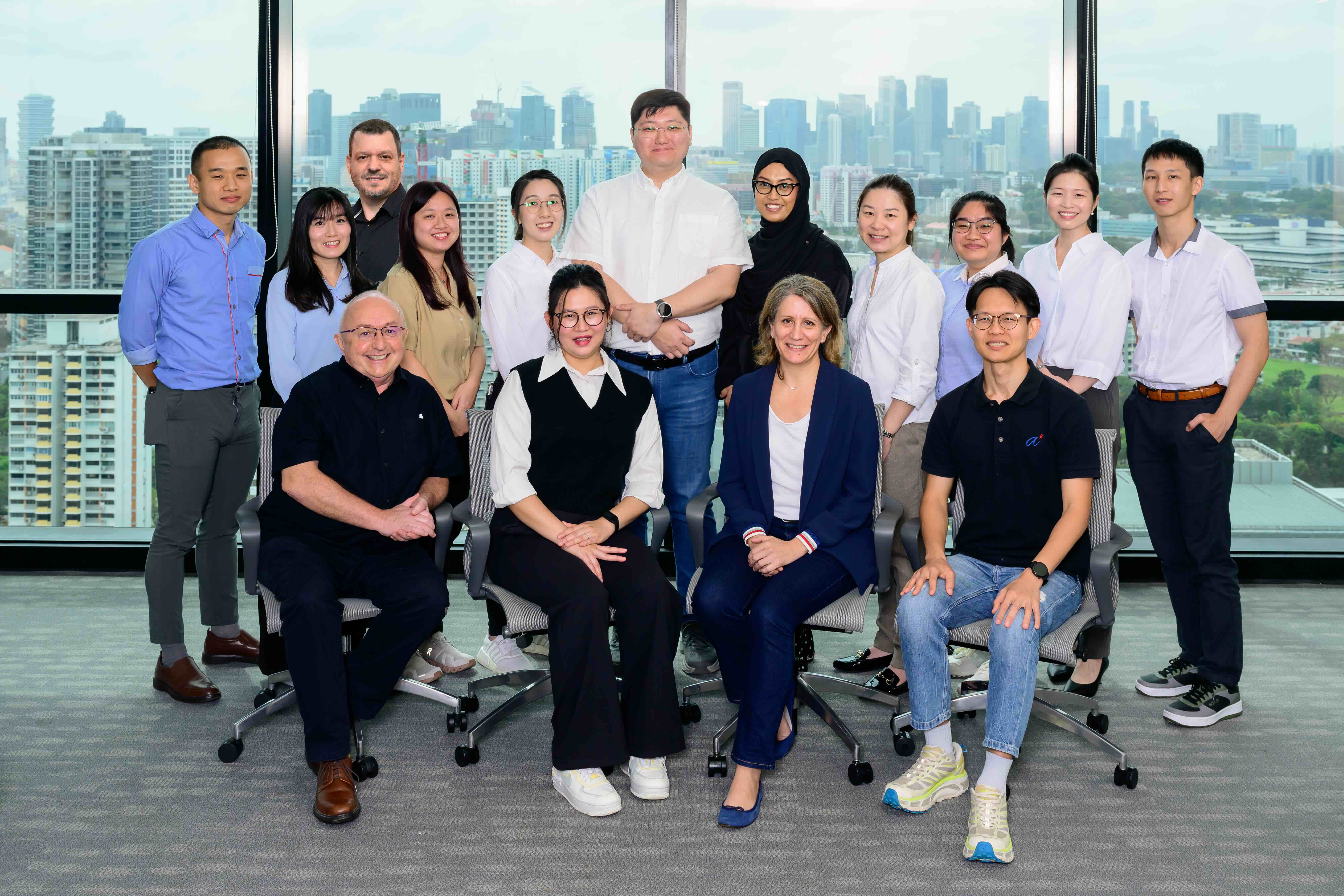Carine Bonnard

Senior Principal Investigator
Email: carine_bonnard@asrl.a-star.edu.sg
carine.bonnard@sris.a-star.edu.sg
Research themes: Human genetics, neurodegenerative disorders, ageing, skin diseases, wound healing, stem cells, organoids, and 3D skin models.
Research themes:
Human genetics, neurodegenerative disorders, ageing, skin diseases, wound healing, stem cells, organoids, and 3D skin models.
Biography:
Dr Bonnard has more than 25 years of experience in both academic research and industry. After a master’s degree in cellular and molecular biology, she was a research engineer in Genset, a Biotech company in Paris (now Merck), contributing to the development of new sequencing technologies. Dr Bonnard joined the Genome Institute of Singapore in 2003 to implement high-throughput genotyping platforms. In 2008, she was awarded with SINGA scholarship and completed her PhD in Human Genetics and Developmental biology at the National University of Singapore, Yong Loo Lin School of Medicine. After her PhD, Dr Bonnard managed two main research programs on rare genetic diseases at the Institute of Medical Biology, resulting in the publication of more than 50 peer-reviewed research papers. The study of children with orphan skin disorders, such as premature skin ageing, skin inflammation, skin dyschromatoses, and hard-to-heal wounds has triggered her interest into skin research. Dr Bonnard joined the Skin Research Institute of Singapore in 2019, leading the Asian Skin Biobank (ASB). She is also Senior Principal Scientist at the A*STAR Skin Research Labs. Through collaborations with academic and industry partners, Bonnard lab is establishing next-generation in vitro human skin models and assays to study skin health and diseases, as well as to develop safe and efficient products for skin care and repair for the Asian population.
Research interests
Our main interest today is to establish high-quality and tailor-made 2D/3D in vitro skin models, that can be utilized for wide range of research studies, with a focus on Asian population. We have developed skin models with different level of complexity and performance to investigate the penetration of a product, its effect on skin permeability and barrier integrity, to study skin inflammation and diseases, pigmentation defects, wound healing and scarring, as well as to understand its mode of action (MoA). To assess the efficacy and safety of products on specific skin phenotypes, the ASB develops a catalogue of skin models that mimic different skin diseases (psoriasis, fibrosis, premature ageing), skin ethnicities (Chinese, Malay, Indian, vs. Caucasian), skin age, and pigmentation levels. By collecting < 4-mm skin biopsy from patients present with rare genetic conditions, we can recreate in vitro tools to investigate disease pathogenesis and shed light on the underlying mechanisms of more common ailments.

Model Development and Asian Skin Biobank
Front Row (Left to Right): Declan Patrick Lunny, Tan Shi Hua, Carine Bonnard, Tham Khek Chian
Back Row (Left to Right): Liu Chixuan, Lee Xiang Yi Joycelyn, David Castano, Tan Li Ling Mandy, Loh Jia Min, Zhang Yizhong, Siti Nur Aishah Binte Alimat, Lim Lay Keng, Lim Yun Jie Larissa, Yap Mei Yi Alicia, Lau Zhi Heng
Examples of last developed 3D skin models:
K.C. Tham, S.S. Lim, C. Bonnard, J.E.A. Common. (2024). Protocol to reconstruct in vitro 3D full-thickness skin equivalent model with collagen I in 6- and 12-well inserts. STAR Protocols (response to reviewers).
S.H. Tan, S. Liu, S.H. Teoh, C. Bonnard, D. Leavesley, K. Liang. (2024). A sustainable strategy for generating highly stable human skin equivalents based on fish collagen. Biomater Adv. 158, 213780. https://doi.org/10.1016/j.bioadv.2024.213780
S.H. Tan, C.C.D. An, J.T. Je Re, C. Bonnard, D. Leavesley, K. Liang. (2022). Design of Hydrogel-based Scaffolds for in vitro Three-dimensional Human Skin Model Reconstruction. Acta Biomater. S1742-7061(22)00640-7. https://doi.org/10.1016/j.actbio.2022.09.068
Examples of collaborative translational work:
Paul McKenna, Commercial Director at Accel-Heal Technologies quote:
“We collaborated with the ASRL/SRIS based on their reputation for wound care research in Asia. Using an appropriate in-vitro wound model, the team provided further evidence that Accel-Heal electrical stimulation accelerates wound healing. The outcome of this study is to create greater awareness among clinicians about this therapy to build a stronger proposition for its inclusion within wound care protocols.”
P.L.K. Lim, Y. Balakrishnan, P.D. Lunny, D. Leavesley, C. Bonnard. (2023). Electrical Stimulation Therapy Accelerates Wound Closure and Re-epithelialization in an In-vitro Human Skin Wound Model. Adv Wound Care. 13(5), 217–234. https://doi.org/10.1089/wound.2023.0018
Mr. Winston Lumenta, Head of Corporate Development at Celligenics quote:
“One of the primary reasons for choosing ASRL/SRIS is that they possess a first-of-its-kind wound healing platform that captures many of the features of chronic human wounds, unlike existing platform technologies. This has allowed us to test the efficacy of our regenerative extract better and provide more accurate data that will be used in our upcoming clinical trials.”
J.S. Chin, M.L.L. Tan, P.L.K. Lim, B. Sharma, A. Yeo, Y.B. Aw, Y.Z. Ng, C. Bonnard, D.L. Becker, P. Mok. (2024). Secretome from prolonged high-density human Wharton’s jelly stem cell culture accelerates wound healing in both in vitro and in vivo models. Int Wound J. (accepted)
Collaborative work with Department of Biomedical Engineering, NUS, Singapore
G. Sahni, S.Y. Chang, J.T.C. Meng, J.Z.Z.Y. Tan, J.J.C Fatien, C. Bonnard, K.H. Utami, P.W. Chan, T.T. Tan, U. Altunoglu, H. Kayserili, M. Pouladi, B. Reversade, Y.C. Toh. (2021). A Micropatterned Human-Specific Neuroepithelial Tissue for Modeling Gene and Drug-Induced Neurodevelopmental Defects. Advanced Science. https://doi.org/10.1002/advs.202001100
Collaborative work with Université de Nantes, CNRS, INSERM, France
Examples of excellent science (high impact journal) using 2D/3D skin models
K.S. Robinson, G.A. Toh, M.J. Firdaus, K.C. Tham, P. Rozario, C. Lim, Y.X. Toh, Z.H. Lau, S.C. Binder, J. Mayers, C. Bonnard, F.I. Schmidt, J.E.A. Common, F.L. Zhong. (2023). Diphtheria toxin activates ribotoxic stress and NLRP1 inflammasome-driven pyroptosis. J Exp Med. 220(10):e20230105.
K.S. Robinson, G.A. Toh, P. Rozario, R. Chua, S. Bauernfried, (…), C. Bonnard, R. Sobota, J.E. Connolly, J. Common, S.L. Masters, K.W. Chen, L. Ho, B. Wu, V. Hornung, F.L. Zhong. (2022). ZAKα-driven ribotoxic stress response activates the human NLRP1 inflammasome. Science. 377(6603), 328–335. https://doi.org/10.1126/science.abl6324
C. Bonnard, N. Navaratnam, K. Ghosh, P.W. Chan, T.T. Tan, O. Pomp, A.Y.J. Ng, S. Tohari, R. Changede, D. Carling, B. Venkatesh, U. Altunoglu, H. Kayserili and B. Reversade. (2020). A Loss-of-function NUAK2 Mutation in Humans Causes Anencephaly Due to Impaired Hippo-YAP Signaling. J Exp Med. 2020;217(12).
J. Trott, Y. Alpagu, E.K. Tan, M. Shboul, Y. Dawood, M. Elsy, H. Wollmann, V. Tano, C. Bonnard, S. Eng, G. Narayanan, (…), N.R. Dunn. (2020). Mitchell-Riley syndrome iPSC exhibit reduced pancreatic endoderm differentiation due to an RFX6 mutation. Development 147(21):dev194878.
H. Hengel, C. Bosso-Lefevre, G. Grady, (…), C. Bonnard, M.A. Pouladi, J.C. Stewart, A. Claridge-Chang, D.J. Lefeber, F.S. Alkuraya, A.S. Mathuru, B. Venkatesh, J.J. Barycki, M.A. Simpson, S.S. Jamuar, L. Schöls and B. Reversade. (2020). Loss-of-function Mutations in UDP-Glucose 6- Dehydrogenase Are a Novel Cause of Recessive Developmental Epileptic Encephalopathy. Nat Commun 11(1):595.
A*STAR celebrates International Women's Day

From groundbreaking discoveries to cutting-edge research, our researchers are empowering the next generation of female science, technology, engineering and mathematics (STEM) leaders.
Get inspired by our #WomeninSTEM
